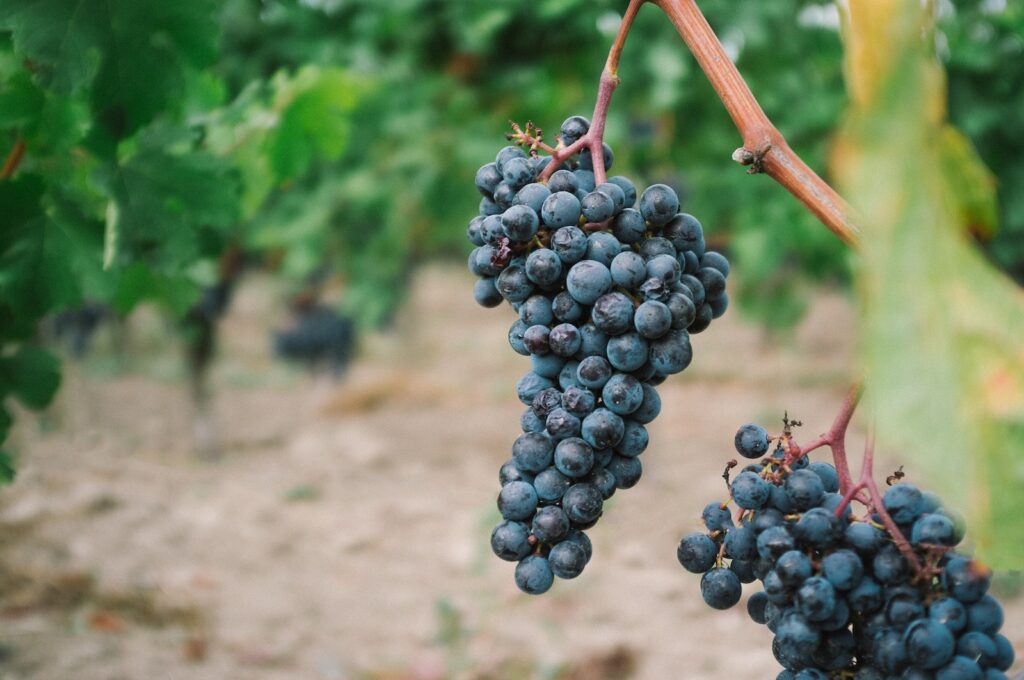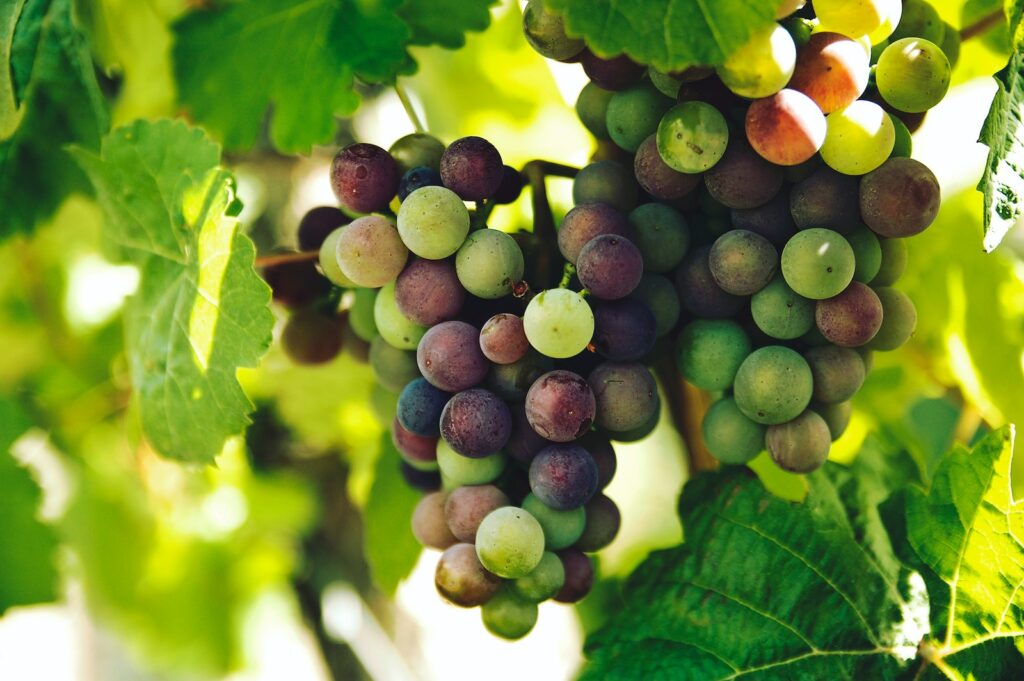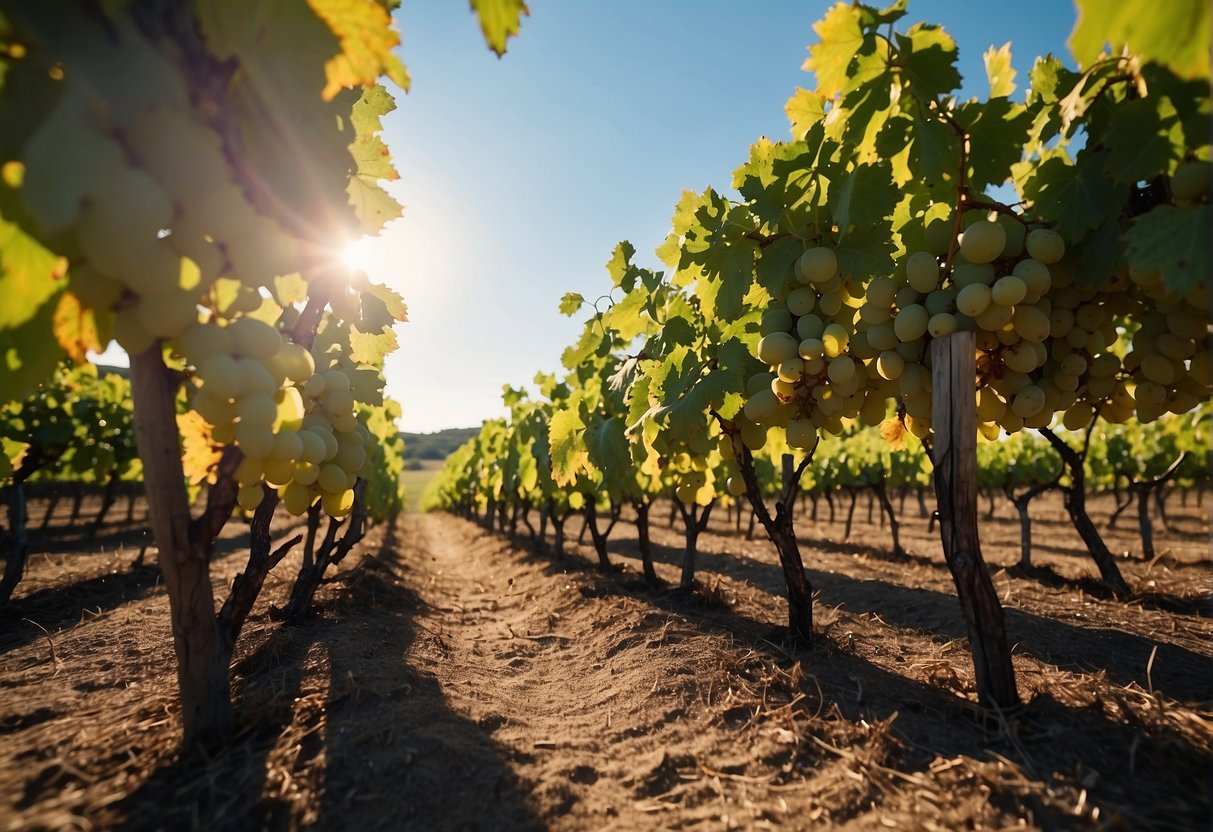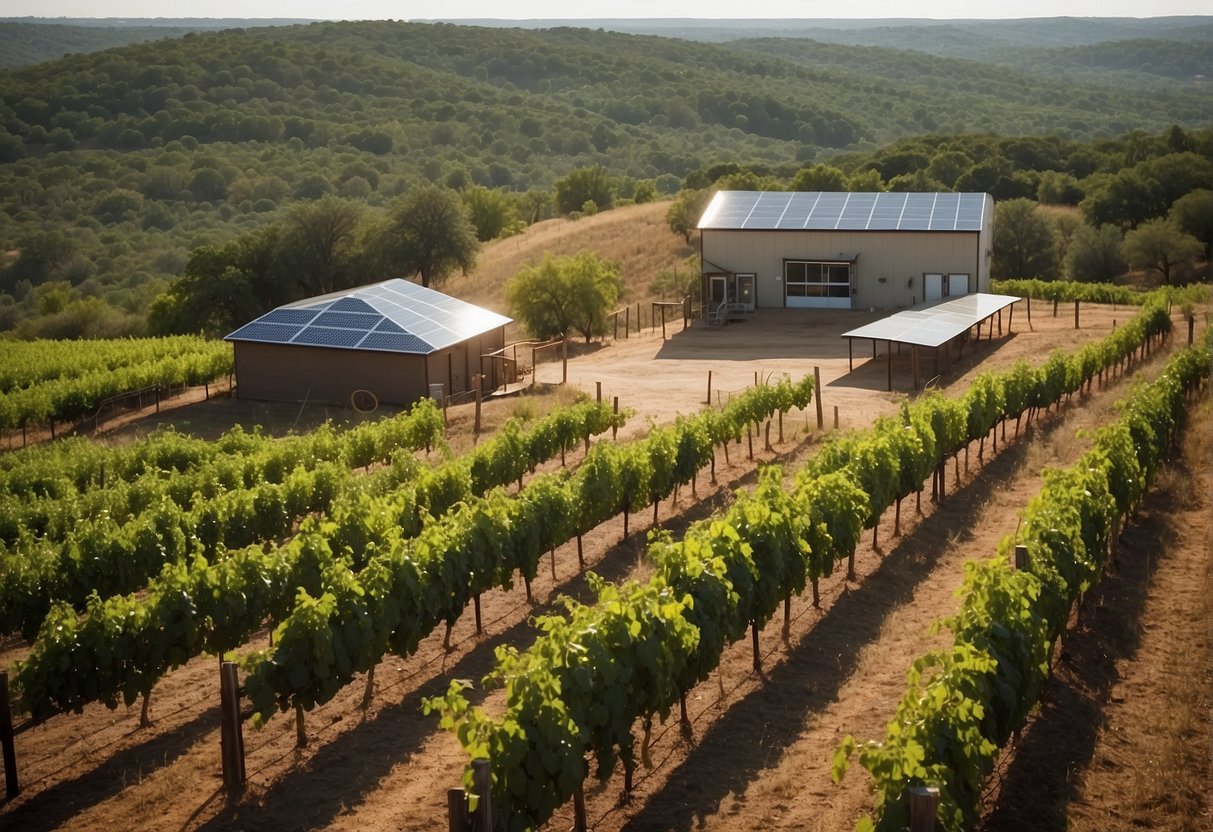
Texas has been making wine since the late 1970s, and the industry has grown and matured since then. Today, Texas is the fifth-leading wine state in the country, producing varietals, table, dessert, and sparkling wines. While the state is known for its bold reds and crisp whites, savvy vintners are adapting by selecting grape varieties more aligned with the growing conditions of Texas vineyards. As a result, emerging grape varietals are becoming increasingly popular in Texas winemaking.
In 2019, the United States Department of Agriculture released a report on grape production in Texas. The report showed that Texas wine grape growers produced 14,180 tons of grapes, an increase of 22% over 2017. Bearing acres were up 11% from 2017, from 4,541. These numbers demonstrate that the wine industry in Texas is growing, and emerging grape varietals are playing a significant role in this growth.
Texas has eight American Viticultural Areas (AVAs), although many vineyards exist outside the specified AVAs. For a wine to mention an AVA on the label, 85% of the volume of wine must come from grapes grown in that designated region. Texas grape growers have learned what varieties do well in Texas climate and soil. In the following sections, we will explore emerging grape varietals in Texas winemaking and their unique qualities.
Influential Grape Varieties in Texas
Texas has been gaining recognition in the wine industry, and the state’s wine production is growing rapidly. Texas winemakers have been experimenting with new grape varieties, and some of these emerging grape varietals are starting to gain popularity. However, some grape varieties have been influential in Texas winemaking for a long time. In this section, we will discuss some of the most influential grape varieties in Texas.
Red Grape Varieties
Cabernet Sauvignon: Cabernet Sauvignon is one of the most popular grape varieties in the world, and it has also been influential in Texas winemaking. The grape is known for its thick skin, which gives the wine its tannic structure. Cabernet Sauvignon is grown in several regions in Texas, including the Texas High Plains and the Hill Country.
Tempranillo: Tempranillo is a red grape variety that is native to Spain. The grape is known for its bold flavors of red fruit, leather, and tobacco. Tempranillo is grown in several regions in Texas, including the Texas High Plains and the Hill Country. The grape is often used to make full-bodied red wines that are perfect for aging.
Tannat: Tannat is a red grape variety that is native to France. The grape is known for its high tannin content, which gives the wine a bold structure. Tannat is grown in several regions in Texas, including the Texas High Plains and the Hill Country. The grape is often used to make full-bodied red wines that are perfect for aging.
Black Spanish: Black Spanish, also known as Lenoir, is a red grape variety that is native to Texas. The grape is known for its resistance to Pierce’s disease, which is a common problem in Texas vineyards. Black Spanish is grown in several regions in Texas, including the Hill Country and the Gulf Coast. The grape is often used to make medium-bodied red wines.
White Grape Varieties
Sauvignon Blanc: Sauvignon Blanc is a white grape variety that is native to France. The grape is known for its crisp acidity and bright flavors of citrus and green apple. Sauvignon Blanc is grown in several regions in Texas, including the Texas High Plains and the Hill Country. The grape is often used to make light-bodied white wines that are perfect for summer.
Chenin Blanc: Chenin Blanc is a white grape variety that is native to the Loire Valley in France. The grape is known for its high acidity and flavors of green apple and honey. Chenin Blanc is grown in several regions in Texas, including the Texas High Plains and the Gulf Coast. The grape is often used to make light-bodied white wines that are perfect for pairing with seafood.
Vermentino: Vermentino is a white grape variety that is native to Italy. The grape is known for its crisp acidity and flavors of citrus and stone fruit. Vermentino is grown in several regions in Texas, including the Texas High Plains and the Hill Country. The grape is often used to make light-bodied white wines that are perfect for pairing with salads and light pasta dishes.
Viognier: Viognier is a white grape variety that is native to France. The grape is known for its rich flavors of peach and apricot, and its full-bodied texture. Viognier is grown in several regions in Texas, including the Texas High Plains and the Hill Country. The grape is often used to make full-bodied white wines that are perfect for pairing with spicy foods.
In conclusion, Texas winemakers have been experimenting with new grape varieties, but some grape varieties have been influential in Texas winemaking for a long time. Cabernet Sauvignon, Tempranillo, Tannat, Black Spanish, Sauvignon Blanc, Chenin Blanc, Vermentino, and Viognier are some of the most influential grape varieties in Texas. These grape varieties are grown in several regions in Texas, and they are often used to make light-bodied and full-bodied wines that are perfect for pairing with a variety of foods.
Emerging Grape Varietals in Texas
Texas winemaking has come a long way in recent years, and one of the most exciting developments has been the emergence of new grape varietals. While traditional international varieties like Cabernet Sauvignon and Chardonnay have been grown in Texas for decades, winemakers are now exploring the potential of other grape varieties that are better suited to the state’s unique growing conditions.
One of the most significant trends in Texas winemaking is the increasing diversity of grape varietals being planted. While some of the state’s top 10 grape varieties remain the same, such as Cabernet Sauvignon and Merlot, there has been a notable rise in the number of Texas-grown grapes that are not commonly found in other wine regions.
Some of the emerging grape varietals in Texas winemaking include:
- Tannat: A red grape that is native to the Madiran region of southwest France. Tannat is well-suited to the hot and dry conditions of Texas and produces full-bodied, tannic wines that are perfect for aging.
- Vermentino: A white grape that is native to Italy’s Liguria region. Vermentino is well-suited to the hot and humid conditions of Texas and produces crisp, refreshing wines with notes of citrus and tropical fruit.
- Aglianico: A red grape that is native to southern Italy. Aglianico is well-suited to the hot and dry conditions of Texas and produces wines with bold tannins and flavors of black fruit, leather, and spice.
In addition to these unique Texas varietals, winemakers are also experimenting with hybrid grape varieties that offer the best of both worlds. These hybrids are often created by crossing a traditional grape variety with a more disease-resistant variety, resulting in a grape that is better suited to Texas’ hot and humid climate.
While there is still much to learn about these emerging grape varietals, early results are promising. Many of these new Texas-grown grapes are producing wines with unique flavor profiles that are winning over both critics and consumers alike. As such, it’s likely that we’ll continue to see more experimentation with these varietals in the coming years.
Overall, the emergence of new grape varietals in Texas winemaking is an exciting development that promises to bring even more diversity and innovation to the state’s already thriving wine industry. With winemakers continuing to push the boundaries of what’s possible, there’s no telling what the future of Texas winemaking holds.

The Impact of Climate and Soil
The climate and soil of Texas play a significant role in the success of emerging grape varietals in Texas winemaking. The unique terroir of the High Plains American Viticultural Area (AVA) is conducive to growing high-quality French, Italian, and Spanish grape varieties. The drier climate of the High Plains allows growers to produce around 30 different Vitis vinifera grape varieties, which would not be possible in other parts of Texas.
The soil in the High Plains AVA is primarily composed of deep, well-drained, sandy loam soils that are rich in calcium, magnesium, and potassium. These soils are ideal for grape growing, as they allow for deep root penetration and good water drainage, which is essential for producing high-quality grapes.
Elevation also plays a significant role in the success of emerging grape varietals in Texas winemaking. The High Plains AVA is located at an elevation of around 3,000 feet, which provides cooler temperatures and higher diurnal temperature shifts than other parts of Texas. These conditions are ideal for producing high-quality grapes with good acidity and balance.
Climate analysis has shown that the High Plains AVA has a semi-arid continental climate, with hot summers and cold winters. The average annual precipitation is around 20 inches, which is low compared to other grape-growing regions. However, the High Plains AVA benefits from a unique microclimate that is created by the combination of high elevation, low humidity, and cool nights. This microclimate helps to extend the growing season and allows the grapes to ripen slowly, which is essential for producing complex and flavorful wines.
In summary, the climate and soil of the High Plains AVA are ideal for producing high-quality grapes and are critical to the success of emerging grape varietals in Texas winemaking. The unique terroir of the region, combined with the semi-arid continental climate, deep, well-drained, sandy loam soils, and high elevation, create the perfect conditions for producing complex and flavorful wines.
Challenges in Texas Grape Growing
Texas grape growers face a variety of challenges that can impact the quality and quantity of their grape harvests. Some of the major challenges include:
Climate
Texas has a hot, dry climate that can be challenging for grape growing. Extreme heat and drought can stress grapevines, making them more susceptible to disease and pests. Additionally, Texas is prone to sudden weather changes, such as hailstorms and heavy rains, which can damage grape crops.
Diseases and Pests
Grapevines are susceptible to a variety of diseases and pests that can impact the health and quality of the grapes. Some of the most common diseases in Texas grape growing include Pierce’s disease, powdery mildew, and black rot. Pests such as grape phylloxera and grapevine leafhoppers can also damage grape crops.
Varietal Selection
Choosing the right grape variety is crucial for successful grape growing in Texas. While some grape varieties, such as Cabernet Sauvignon and Chardonnay, are well-suited to Texas’ climate and soil, others may struggle to thrive. Additionally, some grape varieties may be more susceptible to disease and pests than others.
Labor Costs
Grape growing requires a significant amount of labor, from planting and pruning to harvesting and processing. Labor costs can be a significant expense for grape growers, particularly small-scale operations.
Despite these challenges, Texas grape growers are finding ways to produce high-quality grapes and make exceptional wines. Through careful varietal selection, proactive disease management, and sustainable farming practices, Texas grape growers are helping to build a thriving wine industry in the Lone Star State.
Comparisons with Other Wine Regions
Texas is a relatively new player in the US wine industry, but it is quickly gaining recognition for its unique grape varietals and wine styles. While it may not have the same reputation as California or Europe, Texas is making strides in the wine industry and is quickly becoming a contender in the global market.
When comparing Texas to other wine regions, it’s important to note that each region has its own unique characteristics and strengths. For example, California is known for its Cabernet Sauvignon and Chardonnay, while Europe is famous for its Old World wines like Bordeaux and Burgundy.
In terms of climate, West Texas has a similar hot and dry climate to California, making it ideal for growing grapes like Tempranillo and Cabernet Sauvignon. However, Texas also has unique growing conditions that set it apart from other regions. The Hill Country region, for example, has rocky limestone soil and a higher elevation, which contributes to the unique flavor profile of its wines.
When comparing Texas to other regions known for similar grape varietals, it’s important to note that Texas wines have their own unique characteristics. For example, while Tempranillo is traditionally associated with Spain, Texas-grown Tempranillo has a distinct flavor profile due to the unique growing conditions in the state.
Portugal is known for its Port wine, but Texas is also making strides in the fortified wine category with its own unique twist. The Becker Vineyards in the Texas Hill Country region produces a Port-style wine made from Tannat grapes, which is quickly gaining recognition in the industry.
In terms of white wine varietals, Texas is also making strides with its unique take on the Viognier grape. While the grape is traditionally associated with the Rhone and Provence regions in France, Texas-grown Viognier has its own unique flavor profile due to the unique growing conditions in the state.
Overall, while Texas may not have the same reputation as other wine regions, it is quickly gaining recognition for its unique grape varietals and wine styles. With its own unique growing conditions and commitment to innovation, Texas is poised to become a major player in the global wine industry.
The Future of Texas Winemaking
The future of Texas winemaking looks bright as the industry continues to grow and gain recognition. With over 8,000 acres of vineyards and eight American Viticultural Areas (AVAs), Texas is becoming a serious player in the wine world. Texas wineries are experimenting with new grape varietals, and the state’s unique climate and soil are proving to be ideal for producing high-quality wines.
Texas wineries are producing a wide range of reds, including Cabernet Sauvignon, Merlot, and Syrah, but the state’s unique terroir is also well-suited for producing earthy, port-style wines with a distinctive minerality. Some of the most exciting wines coming out of Texas are roses, which are known for their bright acidity and tropical fruit flavors.
Texas grape growers are also experimenting with new grape varietals that are better suited to the state’s hot and humid climate. Grape varieties like Mourvedre, Tempranillo, and Vermentino are becoming increasingly popular as they can withstand Texas’ harsh weather conditions and produce high-quality grapes.
As the Texas wine industry continues to grow, it is likely that we will see more wineries experimenting with new grape varietals and producing unique and exciting wines. With the state’s unique terroir and the dedication of Texas grape growers and winemakers, the future of Texas winemaking looks bright.



